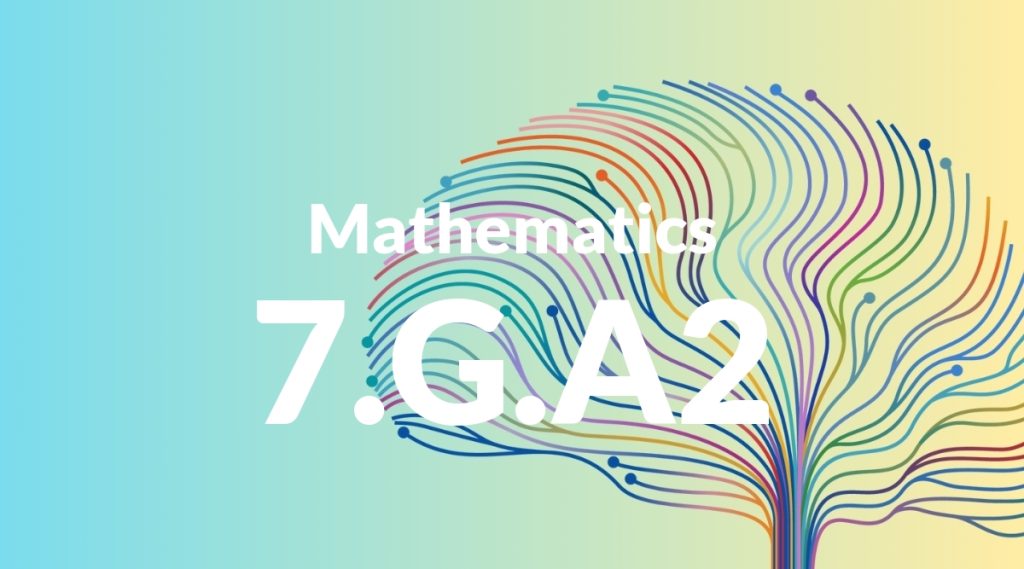Standard: 7.G.A2 – Draw (freehand, with ruler and protractor, and with technology) geometric shapes with given conditions. Focus on constructing triangles from three measures of angles or sides, noticing when the conditions determine a unique triangle, more than one triangle, or no triangle.
Grade level: Grade 7
Subject: Mathematics
Domain: Geometry
Teacher Overview
This standard focuses on constructing geometric shapes, particularly triangles, based on given conditions. It is crucial as it helps students understand the fundamental properties of triangles and the conditions under which they can be uniquely determined or not. This understanding is foundational for more advanced geometric concepts and real-world applications. Students should have a solid grasp of basic geometric shapes and properties, particularly triangles, and be proficient in using measurement tools like rulers and protractors.
Mastering this standard will prepare students for more complex geometric constructions and problem-solving, as well as applications in algebra and real-world contexts such as engineering and design.
Common Misconception 1
A common misconception is that any three angles or three sides will always form a triangle. This is incorrect because certain combinations of angles or sides do not meet the conditions necessary to form a triangle.
Intervention 1
An effective intervention is to use physical manipulatives and interactive geometry software to allow students to experiment with different angle and side combinations, observing when a triangle is formed and when it is not.
Common Misconception 2
Another misconception is that triangles formed with the same three measures are always unique. This is incorrect as different configurations can result in multiple triangles with the same measures.
Intervention 2
To address this, teachers can provide counterexamples and engage students in activities where they construct multiple triangles from the same set of measures, helping them see the variability.
Prerequisite Knowledge
Students should understand basic geometric shapes, be familiar with the properties of triangles, and have experience using rulers and protractors for measurement.
Subsequent Knowledge
Students will develop skills in understanding more complex geometric constructions, solving problems involving the properties of polygons, and applying geometric principles to algebraic contexts.
Instructional Activities
- Use geometry software to construct triangles with given conditions.
- Hands-on activities with rulers and protractors to draw triangles.
- Group projects where students create real-world designs involving triangles.
- Problem-solving sessions focusing on when triangles can or cannot be formed.




